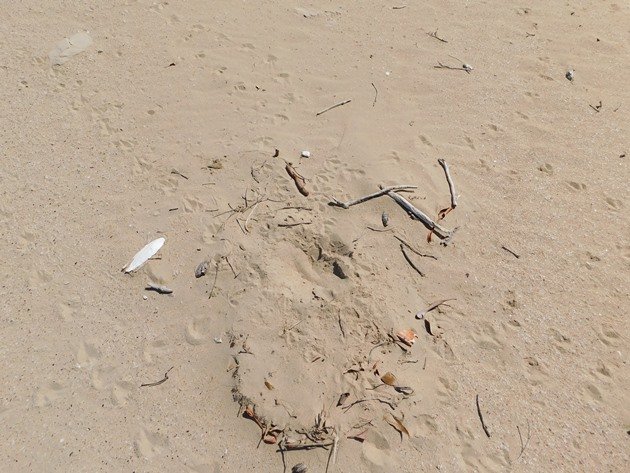
An empty Pied Oystercatcher nest should mean that there are now chicks and that the parents have been sitting on a clutch of two eggs for twenty eight days. Sadly this is rarely the case along our coastline here in Broome. Last week I introduced you to the first Pied Oystercatcher chicks of 2019 and so far they are surviving. Their parents are moving them through the dunes to the north and they will soon be closer to the reef during the upcoming bigger tides.
However, the northern part of Cable Beach is a completely different story. There are huge expanses of sand at low tide and there are more Pied Oystercatchers in pairs there than the southern end of the beach. These pairs of Pied Oystercatchers are very close to a reef that offers an excellent food source all year round, but they fare very poorly when it comes to survival rate of their eggs let alone any chicks that hatch out.
Walking along the beach this week we discovered nest after nest that was empty. Some nests had clearly been there for some time and had contained eggs until recently. Other nests were new scrapes that were to be nests in future days. There was evidence of feral cats and now we have seen foxes around Broome we know they will also be a threat to our local shorebirds. It is disheartening to see so many empty nests….
Over recent months a lot of the sandstone cliffs have washed away and parts of the beach are no longer accessible when the tide is in following a breach in the sand bank. Maybe this will slow down some predation, but we don’t know for sure. Pied Oystercatcher chicks can swim, but maybe feral cats will too if they are hungry.
Numerous empty Pied Oystercatcher nests and scrapes along the length of the beach
One of our pairs of Pied Oystercatchers has always laid eggs on top of a cliff and this year has been no different. The cliff is a lot smaller than in previous years and when we arrived at the beach there was a vehicle parked close to it. We suspected there would be a nest there and on our return trip from walking to the south side of Willie Creek the vehicle had left. We then observed the pair of Pied Oystercatchers flying up at a Brahminy Kite. This is typical behaviour for a pair of Pied Oystercatchers that have eggs. We quickly investigated once the Brahminy Kite had moved through and discovered two eggs laid on the top of the cliff. The Pied Oystercatchers have a good vantage point to watch for threats and their nest is unlikely to be run over by four-wheel drives, which can be an issue for the Pied Oystercatchers that nest on the soft sand above the high tide mark. This is a popular beach at the moment for vehicles and most people would have no idea that Pied Oystercatchers and Red-capped Plovers are trying to breed along our coastline at the moment.
Nest on top of the sandstone cliff
As you can see, every Pied Oystercatcher nest is different and sadly all but the last one on the cliff is empty. We don’t like empty nests unless chicks have walked away from them…….


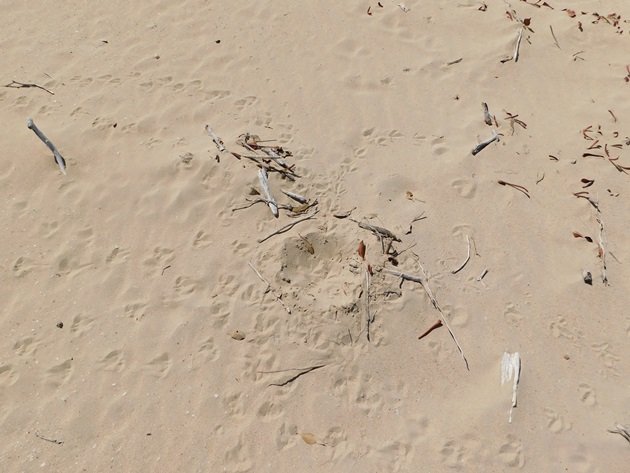
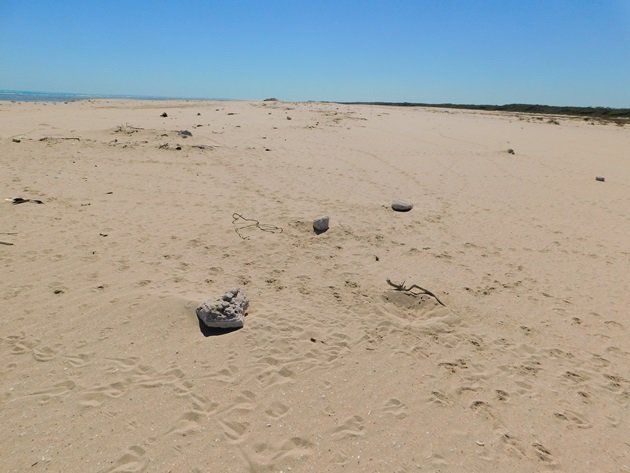
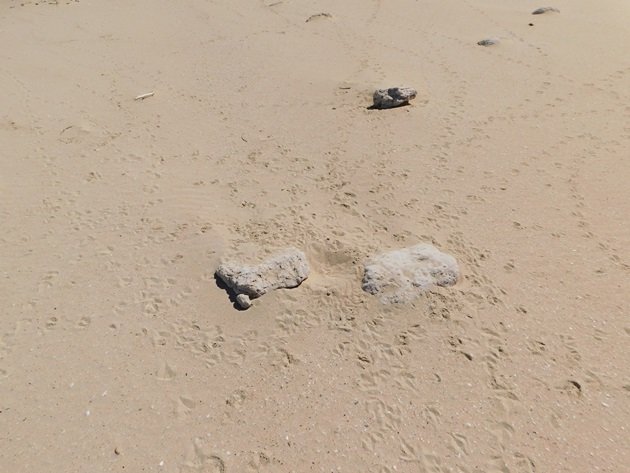

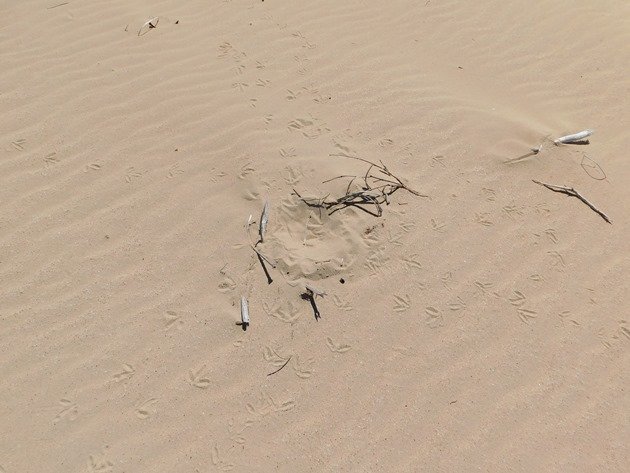
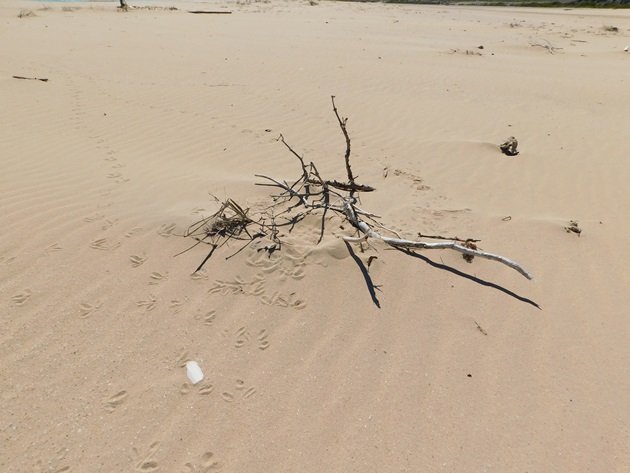
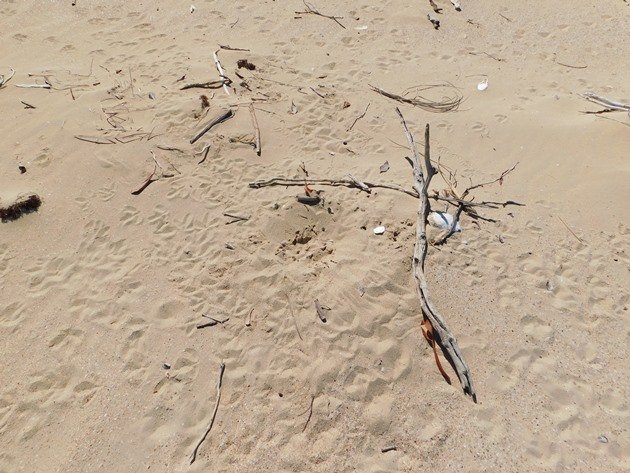
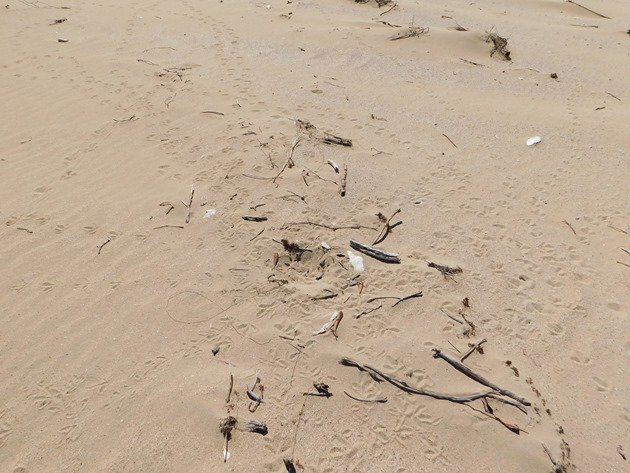
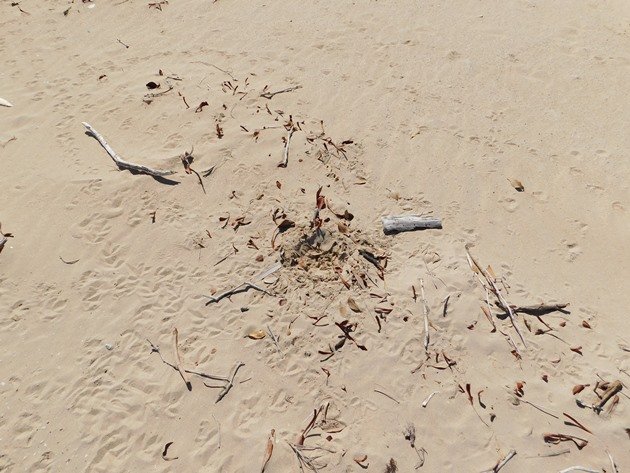











I’ve been observing both Piping Plover (Endangered & Threatened) and American Oystercatchers nesting here on NYC beaches. Different governmental agencies which have jurisdiction over the beaches use exclosures to ensure successful hatching of Plover chicks. The Oystercatchers nest in close proximity to the Plovers. Problem is, once the chicks begin foraging within 24 hours of hatching, they’re highly vulnerable to predators before fledging to head South in September. The predators here are feral cats, racoons, Crows and Gulls–all a constant with the people swarm that make the beaches a garbage dump to attract them. It’s easier to control animals than people. Lessen the people, and predation would lessen significantly.